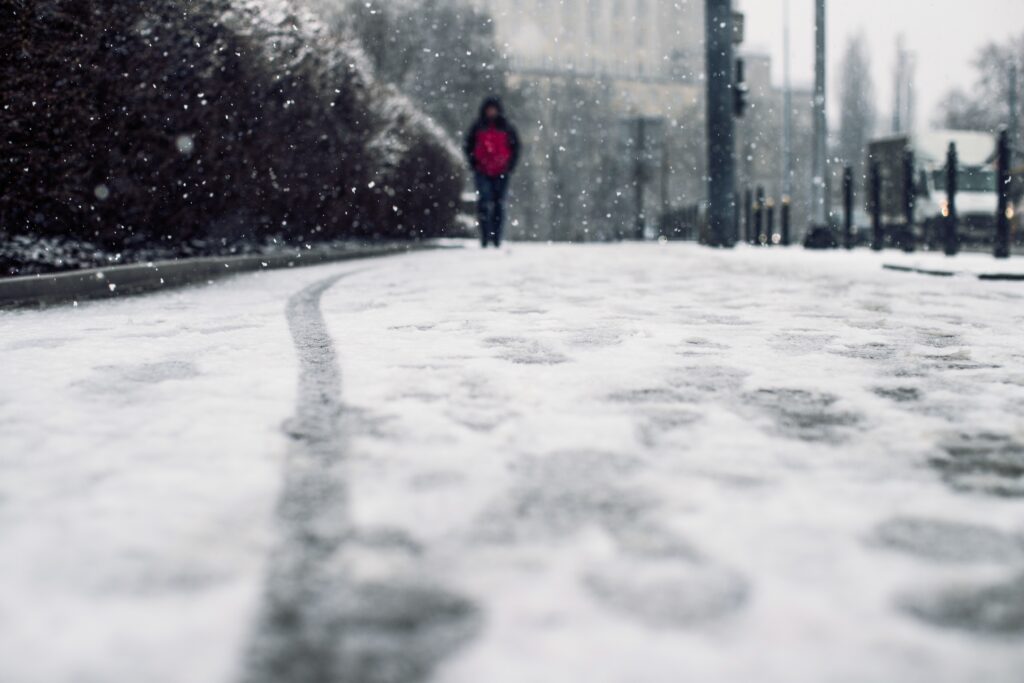Can Safe Paw or Safe Thaw Cause Dark Spots on Concrete?

One concern that occasionally arises among users of ice melt products is the appearance of dark spots or discoloration on concrete surfaces. When you’re using pet-safe, chloride-free options like Safe Paw or Safe Thaw, it’s fair to wonder: Could these dark patches be caused by the product itself?
The clear answer is: No. Safe Paw and Safe Thaw do not create black or dark spots on concrete. If such discoloration appears, it’s more likely due to oxidation, previous product buildup, or natural mineral deposits in or around the concrete—not the deicer.
Understanding Dark Spots on Concrete
Concrete is a porous material, and its appearance can be affected by various environmental and chemical factors. Dark or black stains may occur due to:
- Iron or mineral oxidation within the concrete
- Organic staining from decaying leaves, dirt, or mold
- Previous ice melt products containing chlorides or other reactive chemicals
- Moisture pooling or poor drainage that leaves water marks
These blemishes may become more visible after snow and ice melt, but they’re not being caused by Safe Paw or Safe Thaw.
Why Safe Paw and Safe Thaw Are Not to Blame
Both Safe Paw and Safe Thaw are specially formulated to be non-reactive, non-corrosive, and free of harsh salts. Here’s what they do—and don’t—contain:
- No sodium chloride, calcium chloride, or magnesium chloride, which are known to cause concrete damage and discoloration
- No iron-based components that can oxidize and stain surfaces
- No aggressive dyes that leave behind permanent residue
- Non-toxic, color-stable ingredients that break down naturally
The visibility dye in Safe Paw is typically greenish and non-staining. It disappears naturally or can be rinsed away with water. Neither product contains anything that would produce black or brown staining on your walkway or driveway.
What Might Be Causing the Dark Spots?
If you notice dark patches after using Safe Paw or Safe Thaw, consider these more likely culprits:
- Oxidation of iron present in the aggregate or reinforcing steel below the concrete
- Residue from previous deicers, especially chloride-based products that may have chemically altered the surface
- Mold, algae, or mildew, especially in shaded or moist areas
- Oil drips or vehicle fluids, which are common on driveways
These issues are unrelated to the Safe Paw or Safe Thaw application and can be treated with standard cleaning solutions.
How to Treat and Prevent Concrete Discoloration
If dark spots do appear, here’s what you can do:
- Clean the area using an oxygen bleach-based solution (like OxiClean)
- Scrub with a stiff-bristled brush and rinse thoroughly with water
- Avoid using unknown or mixed deicers, especially those claiming to be “safe” but containing chlorides
- Seal your concrete surface annually to minimize water absorption and surface staining
Conclusion: Dark Spots Aren’t From Safe Paw
If you’re seeing black or dark stains on your concrete, Safe Paw or Safe Thaw are not the cause. These deicers are chemically stable, chloride-free, and surface-safe, designed specifically to avoid corrosion, discoloration, or long-term damage. Discoloration is more often a sign of natural wear, environmental factors, or residue from previously used products. Use confidently—and clean if needed.

